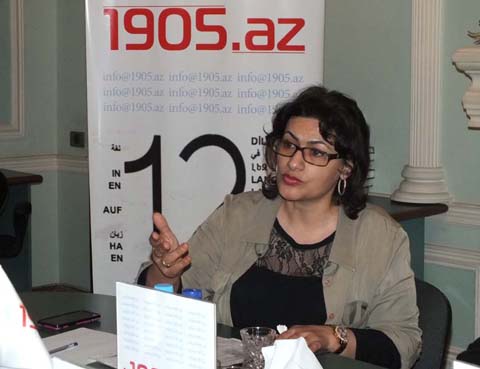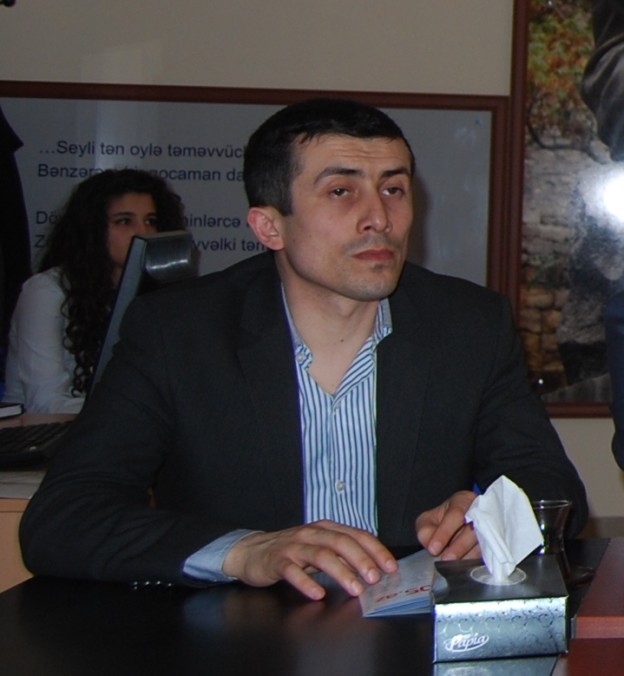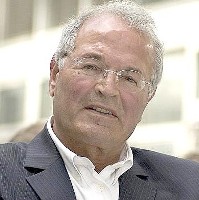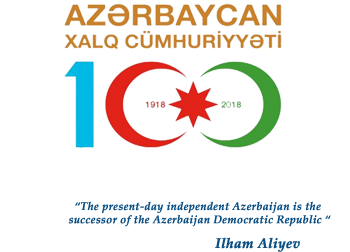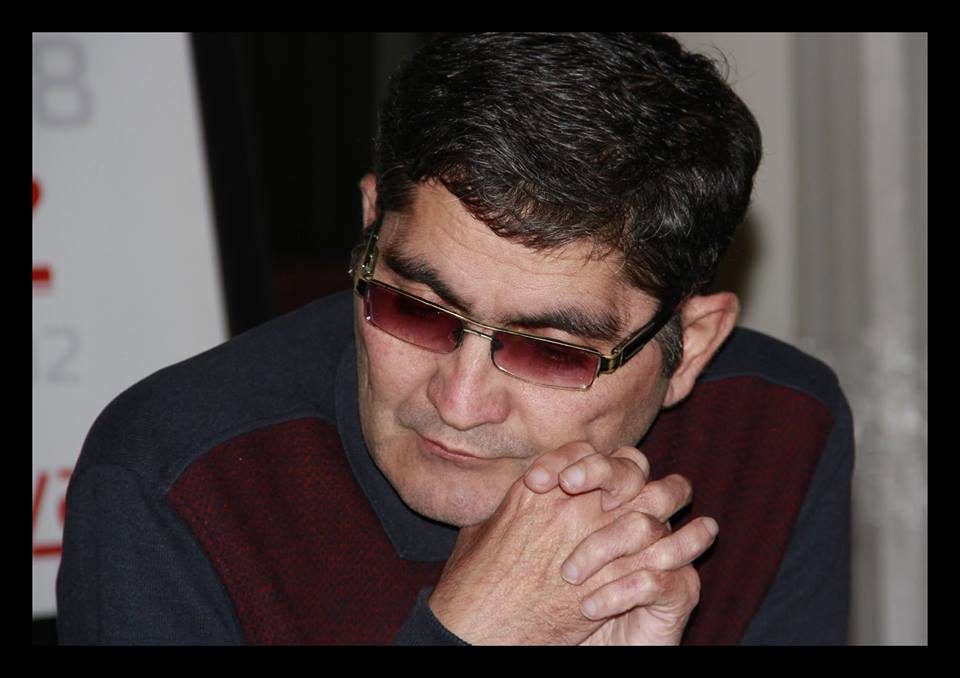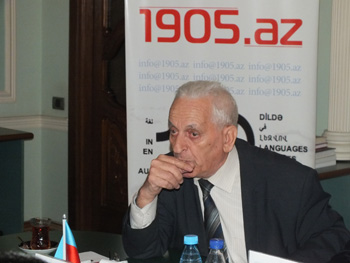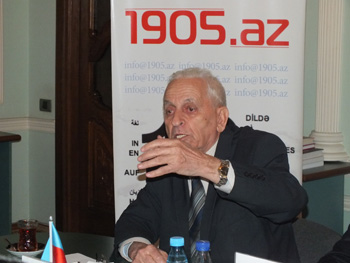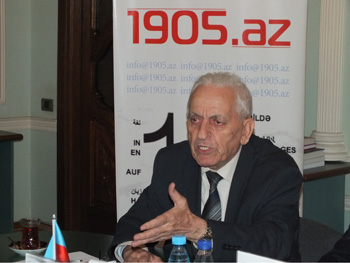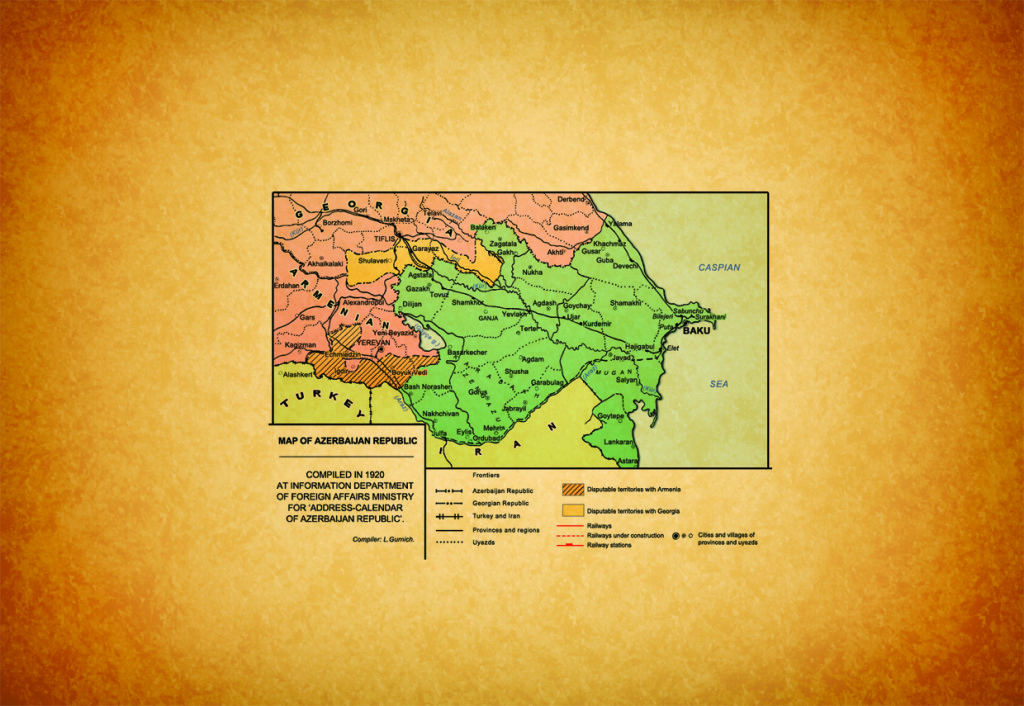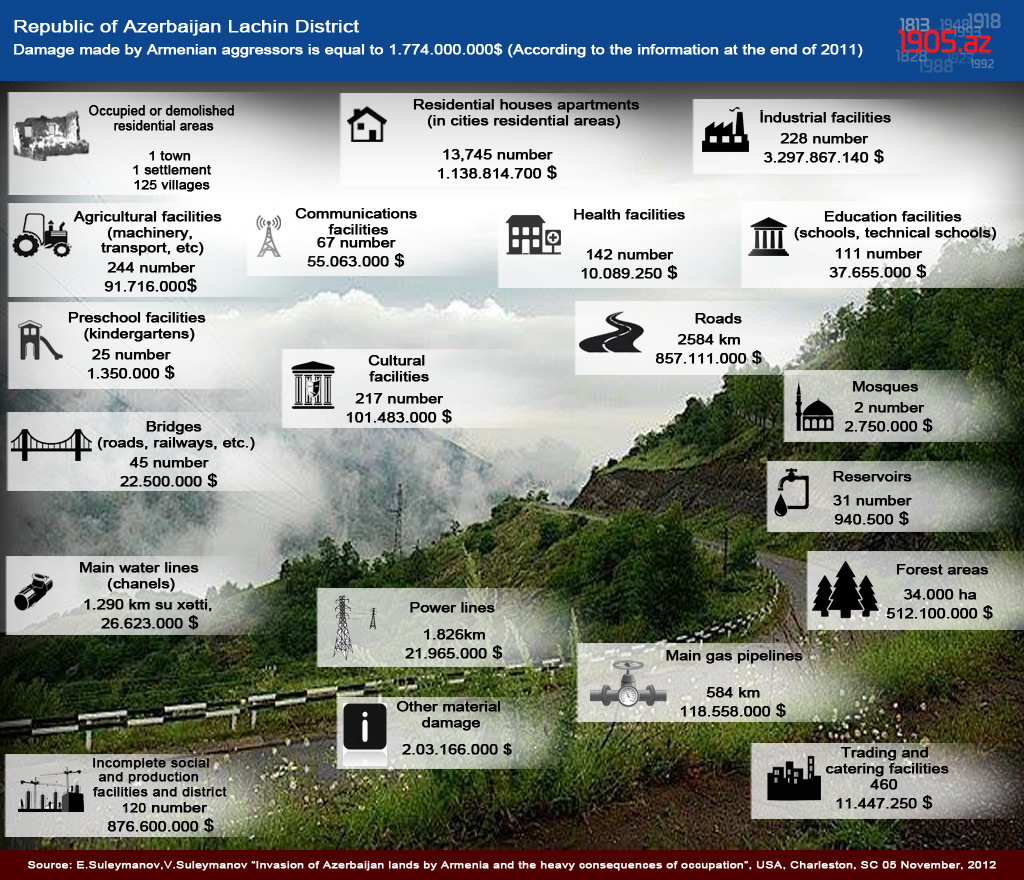So-called Armenian Genocide
Differences Are Overwhelming
By Bruce Fein
The differences between the alleged Armenian genocide of the World War I era and the Holocaust are overwhelming, something akin to the legal chasm between first degree murder and negligent homicide. To equate the two would be to vitiate the moral stigma that should attach to the crime of crimes, and to violate the rule of law itself.
Under international law, genocide is carefully defined as the specifically intended extermination, in whole or in part, of a racial, ethnic, or religious group because of their identity as such.
Under the Ottoman Empire, Armenians were a favored, not disfavored, religious minority.
The millet system granted them unprecedented local autonomy. Further, many Armenians rose to the commanding heights of the Ottoman civil service and economy, with an Armenian serving as the Sultan’s Foreign Minister in the late 19th century. In the decades before World War I, when nationalistic impulses were surging, Armenian extremists sought to provoke the Ottomans into retaliatory action by chronic acts of terrorism, a model that worked well against the Ottomans in Bulgaria. Armenians themselves openly acknowledged this malevolent plotting.
When World War I arrived, Ottoman Armenians defected en masse to fight for the Empire’s enemies, especially Russia. Others remained behind to serve as Fifth Columnists or saboteurs.
The Armenians boasted of their perfidy at the post-World War I Paris Peace Conference to justify their demand for a separate nation. The Armenian treason is well documented by Armenian sources, especially in the memoirs of Boghos Nubarian.
The massive Armenian alliance with the Empire’s enemies ignited a cycle of massacre and counter-massacre. As self-preservation is the first law of nations, in 1915 Ottoman officials ordered the relocation of its politically suspect Armenian population then living in militarily sensitive zones to its territory now known as Syria. Armenians in Istanbul and elsewhere outside these national security areas were left generally undisturbed. The relocation enterprise proved grim. The Empire’s food and medical resources were thin for all the population. Armenian casualties from starvation, disease, and Ottoman Muslim killings were painfully high, perhaps 300,000-600,000. Similarly, at the end of the War and its aftermath, Muslim casualties at the hands of Armenians and their allies approximated 2.5 million. The Armenian figure though lower in absolute numbers, constitutes a substantially greater portion of the original Armenian population. The tragic Armenian losses and suffering deserve sympathy and commemoration, but no more so than their Ottoman Muslim counterparts. One innocent life is not worth more than another’s in the eyes of God.
After the Ottoman defeat, the British occupied Istanbul and commanded full access to Ottoman Archives. Under the 1920 Treaty of Sevres, they were tasked to prosecute Ottoman officials guilty of Armenian massacres. More than 100 suspects were detained on Malta as a meticulous investigation ensued. After more than two years of exhaustive inquiry, Britain’s highest legal experts advised against any prosecutions because want of reliable evidence. The detainees were thus released. No Ottoman official was either prosecuted or convicted of complicity in Armenian massacres in a court with the trappings of due process.
The post-World War I Ottoman Government was completely dependent upon the victorious Allied Powers who then occupied the remnants of the Ottoman Empire. This government established ersatz courts to try its political enemies. Included were trials on charges such as “outrages to Armenians.” With almost no presentation of evidence, the courts found nearly every defendant guilty as charged. 1,376 individuals were sentenced to varying degrees of punishment for offenses ranging from violations of military order such as leaving a post without permission to failing to properly carry out the order under which the Ottoman Armenians of eastern Anatolia were relocated. No charges of crimes against humanity were raised or sustained. According to trial transcripts, the convictions were mainly political retribution, aimed at those who brought the Ottoman Empire into such a disastrous war. Sixty-two officials were sentenced to death and executed. Six officials, members of the Union and Progress Party, were tried in absentia and four were sentenced to death. Armenians eventually assassinated some of those tried in absentia.
Though these courts provided little due process, this does not mean that no Ottoman Muslims committed crimes against Ottoman Armenians or that no Ottoman Armenians committed crimes against Ottoman Muslims. But one must acknowledge that the Ottoman government brought to trial over 1,400 individuals for crimes against Armenians and executed some that were guilty of high crimes, while on the other hand, neither the Armenian nation nor Armenian guerrilla groups ever charged, disciplined, or prosecuted their own for equally gruesome and notorious crimes against Ottoman Muslims. Indeed, the perpetrators were characteristically treated as heroes!
They still are.
The differences between the Holocaust and the alleged Armenian genocide are cosmic. The Ottomans relocated Armenians because of suspect political loyalties, not because of race or religion. They were thus left undisturbed outside militarily sensitive areas. Hitler exterminated Jews precisely because of their race, not because of suspect political allegiance. Indeed, many had been highly decorated German soldiers in World War I. None were treasonous as World War II unfolded. But all were selected for the gas chambers or worse.
Killings during wartime for political reasons are not genocide; otherwise, war itself would be defined as genocide and the American fire and atomic bombings of Tokyo, Hiroshima, and Nagasaki would have exposed United States President Harry Truman to a genocide prosecution.
In sum, the Armenian tragedy of World War I falls miles short of genocide because it pivoted on Ottoman political-national security calculations, not on racial or religious hatred. Further, Armenian deaths were not specifically intended, but were the unfortunate fall-out of malnutrition, pestilence, and community retaliatory vendettas. Indeed, the Ottoman government prosecuted more than 1,400 for maltreatment of Armenians. Hitler, in contrast, prosecuted Germans for refusing to kill, maim, or maltreat Jews.
Evidence proffered to support the Armenian genocide claim is unpersuasive. Ambassador Morgenthau’s Story is routinely adduced as the smoking gun. But his narrative is almost entirely hearsay and his veracity highly suspect. His chief translator and secretary were both Armenian, Arshag Schmavonian and Hagop Andonian, respectively. Further, Morgenthau’s correspondence with President Woodrow Wilson betrays an intent to contrive news, such as asserted Ottoman villainies, that would prod the United States into war. Moreover, Morgenthau unapologetically preached the racial inferiority of the Turks cursed with “inferior blood.” Would you trust the Ku Klux Klan to provide reliable accounts of black behavior in the United States?
Morgenthau’s storyline also fails to substantiate a racial, ethnic, or religious as opposed to a political motivation for the actions of Ottoman officials. He writes, for example: “That the Armenians all over Turkey sympathized with the Entente was no secret. ‘If you want to know how the war is going,’ wrote a humorous Turkish newspaper, ‘all you need to do is look in the face of an Armenian. If he is smiling, then the Allies are winning; if he is downcast, then the Germans are successful.'”
If Ambassador Morgenthau’s evidence were convincing, the twin decisions of the United States not to declare war on the Ottoman Empire and not to assume a League of Nations protectorate over a post-World War I Armenian state seem inexplicable. Morgenthau’s story is also undercut by United States Secretary of State Robert Lansing’s observation in November 1916: “I could see that [the Armenians’] well-known disloyalty to the Ottoman Government and the fact that the territory which they inhabited was within the zone of military operations constituted grounds more or less justifiable for compelling them to depart their homes. “United States Ambassador to Turkey, Rear Admiral Mark L. Bristol, wrote on March 28, 1921: “I see that reports are being freely circulated in the United States that the Turks massacred thousands of Armenians in the Caucuses. Such reports are repeated so many times it makes my blood boil. The Near East Relief have the reports from Yarrow and our own American people which show absolutely that such Armenian reports are absolutely false.”
The United Nations Economic and Social Council Sub-Commission on the Prevention of Discrimination and Protection of Minorities refused to endorse an Armenian genocide assertion leveled by Special Rapporteur Benjamin Whitaker for want of proof. That non-endorsement was reaffirmed by the United Nations on October 5, 2000.
The post-World War II Nuremberg Tribunal refused to entertain as evidence a quote attributed to Adolph Hitler on the eve of his Polish invasion asking who remembers the extermination of the Armenians. The attribution is no more reliable than the fraudulent Protocols of the Elders of Zion, as Princeton Professor Heath W. Lowry concludes in his authoritative booklet, “The U.S. Congress and Adolph Hitler on the Armenians.”
Morgenthau’s story is further dubious because, as United States Senator Hiram Johnson fretted, truth is the first casualty of war. Thus, the British-created Bryce Commission after World War I concluded that reports of countless rapes of Belgian women and gruesome killings of children by German soldiers were apocryphal wartime propaganda calculated to stir public wrath against the enemy. Isn’t at least substantially likely that Ambassador Morgenthau succumbed to a corresponding reporting disease regarding the Ottoman’s?
Morgenthau’s story is also disputed by esteemed historians with no Ottoman or Turkish axe to grind, such as William Langer, Stanford Shaw, Bernard Lewis, and Justin McCarthy.
Commander Arthur Tremaine Chester, the Representative of the U.S. Shipping Board in Istanbul, wrote in the New York Times History Journal in February 1923 a powerful refutation of the Armenian genocide claim that should shake the confidence of even its strongest proponents: “We hear a great deal about the deportation of Armenians from the Northeast of Turkey during the World War. The facts are that the Turks sent an army to the Russian border to defend their country against the threatened Russian invasion. The army consisted of Turkish subjects of all nationalities, being drafted just as ours are drafted. At the front the Armenians used blank cartridges and deserted in droves. This was bad enough, but the Armenians were not satisfied with this form of treachery. The provinces in the rear of the army had a large Armenian population, and these people, feeling that there was an excellent chance of the Russians defeating the Turks, decided to make it a certainty by rising up in the rear of the army and cutting it off from its base of supplies. Let me draw a parallel imaginary case. Suppose that Mexico was a powerful and rival country with which we were at war, and suppose we sent an army to the Mexican border to hold back the invading enemy; suppose further that not only the negroes in our army deserted…but those left at home organized and cut off our line of communication. What do you think we as a people, especially the Southerners, would do to the negroes? Our negroes have ten times the excuse for hating whites than the Armenians have for their attitude toward the Turks. They have no representation, although they have an overwhelming majority in large sections of the South, and have nothing to say in the making or administration of the laws under which they are governed. South of the Mason and Dixon line they are practically a subject race, while the Armenians in Turkey have not only full representation but special privileges not accorded by any other country.”
Genocide charges are too important to be addressed by sloppy or careless history or political manipulations.

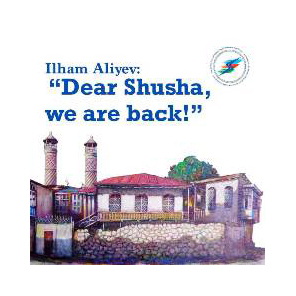
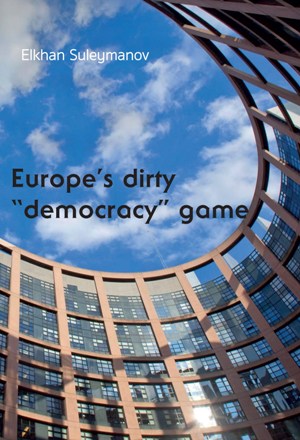
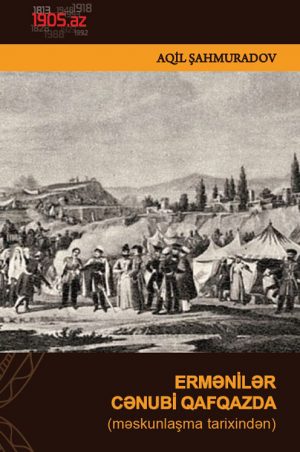





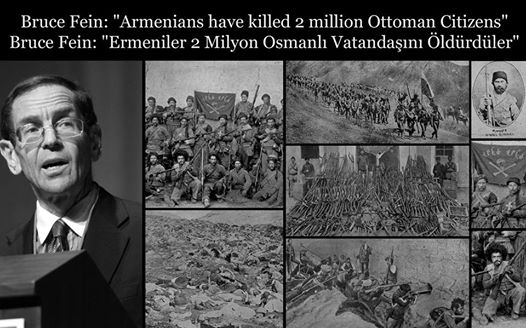
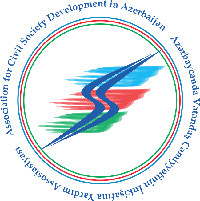
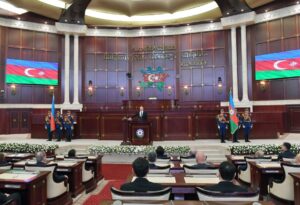 Inauguration ceremony of President of Azerbaijan Ilham Aliyev was held
Inauguration ceremony of President of Azerbaijan Ilham Aliyev was held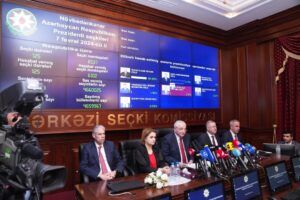 Ilham Aliyev wins presidential election with 92.05 percent of votes VIDEO
Ilham Aliyev wins presidential election with 92.05 percent of votes VIDEO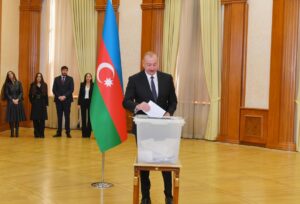 President Ilham Aliyev, First Lady Mehriban Aliyeva and family members voted in Khankendi VIDEO
President Ilham Aliyev, First Lady Mehriban Aliyeva and family members voted in Khankendi VIDEO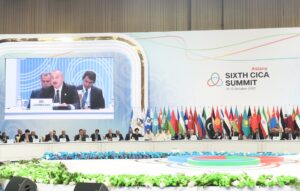 Plenary session of 6th Summit of Conference on Interaction and Confidence Building Measures in Asia gets underway in Astana. President Ilham Aliyev attends the plenary session VIDEO
Plenary session of 6th Summit of Conference on Interaction and Confidence Building Measures in Asia gets underway in Astana. President Ilham Aliyev attends the plenary session VIDEO President Ilham Aliyev was interviewed by Azerbaijani TV channels in Prague VIDEO
President Ilham Aliyev was interviewed by Azerbaijani TV channels in Prague VIDEO



